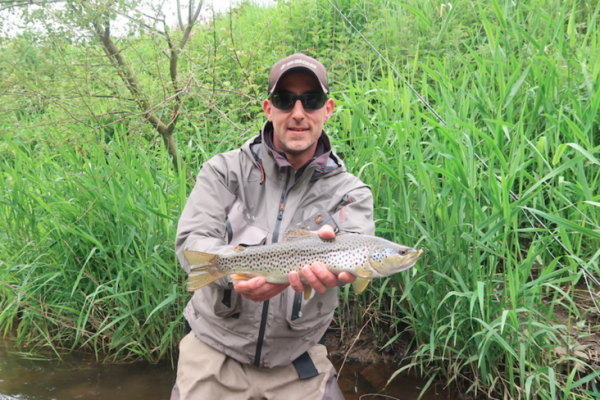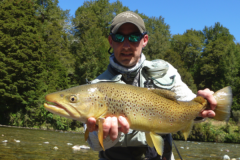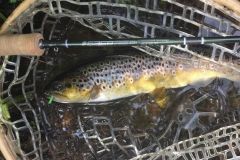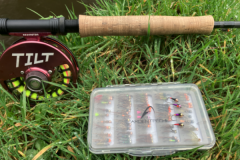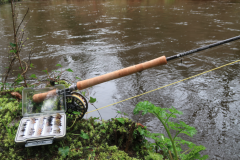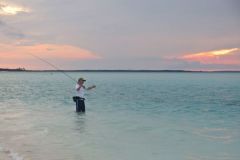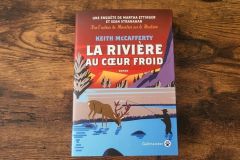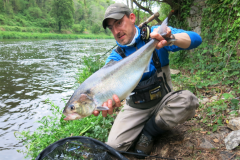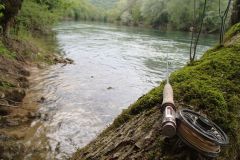What about the mayfly?
Mayflies live in galleries dug in the bottom of some of France's sandy to sandy-muddy rivers. They spend 2 to 3 years in these tunnels before swimming to the surface and quickly hatching out of their nymphal envelopes as quickly as possible. It's amazing to see how they manage to extricate themselves from their exuviae. This is a very dangerous time in their lives. They have to avoid the fish who know that every year their hatching will take place. Then, once they're airborne, they must avoid passing birds on their way to the sky, as they too are fond of these beautiful, protein-rich insects. Resting on a branch, bush or riverbank plant by the river, they undergo a final metamorphosis to become the perfect imago or insect, often a little darker, but ready to reproduce and perpetuate the species.
There are two types of mayfly, ephemera danica and ephemera vulgata which are sometimes found in the same rivers.
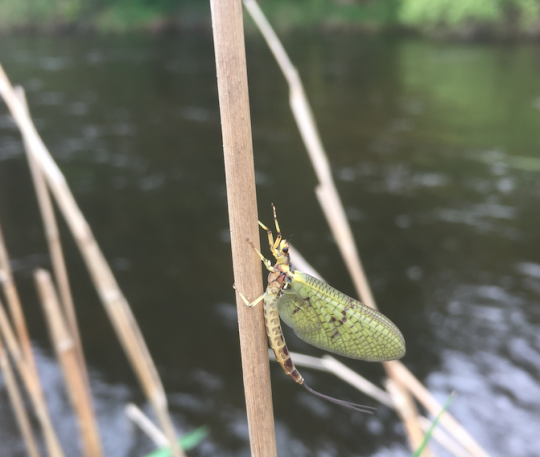
May fly rivers
The May fly is one of the most eagerly awaited hatchings on French rivers populated by this mayfly. Especially for those who don't have a March Brown. They are often massive, as on the Sorgue, in the rivers of Normandy, but also in Brittany and other regions of France with suitable waterways.
On some rivers, this is the most important hatching period of the year, and one during which it's possible to outwit large fish who take advantage of the opportunity to gorge themselves and put on weight. It's an incredible sight to see these large, graceful insects with their clumsy flight take to the skies.
Emergence is a key phase for this fly, as it is for many aquatic insects, as they move from the aquatic to the aerial environment. This makes them very vulnerable. Fish take advantage!
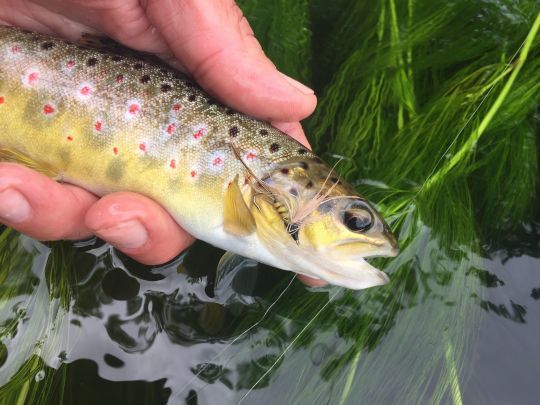
It's essential to have one of these models in your tackle box to cope with the often large hatches that can cause the river to boil. If you don't, chances are you won't catch any trout and you'll miss out on the fishing!
Sub-imago imitation
Here's one of my favorite models.
This fly imitates the sub-imago, i.e. the insect that has just hatched and is ready to take off. Trout mainly take this stage, or when the fly falls back on the water by mistake during the first take-off. Of course, they are also interested in the nymph that swims to the surface. In fact, before the hatching starts, often in mid- or late afternoon, the use of a May fly nymph can be very effective.
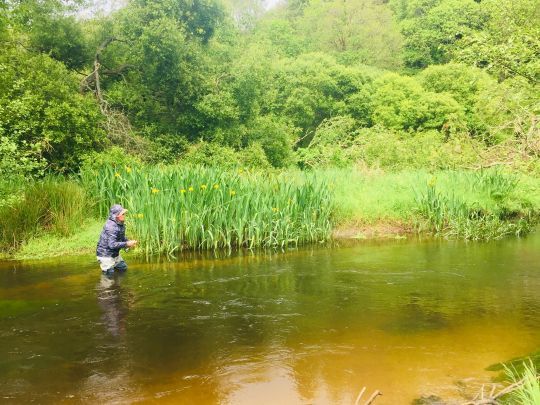
Assembly sheet
- Tiemco 200R hook in size 10 or 12.
- UTC 70 black mounting wire or equivalent.
- Attach a few pheasant tail fibers (4/5) by passing the mounting thread 2/3 times behind them âeuros possibility of mounting a few pardo fibers on top (but float higher).
- Secure a few pheasant herls (2 or 3) by the end of the thick brown mounting wire.
- Then attach to the bend and wrap with yellow or pale yellow Uni Yarn or dubbing. Form a conical, slightly chunky body. Then hoop well-spaced with pheasant or brown yarn.
- Attach a few fibers of CDC gray or pale yellow or a mixed underwrap.
- Secure a good tuft of venison over it, keeping all the hairs on the top of the hook and holding it on the top of the shank while securing.
- Attach a few fibers of natural or yellow male duck breast.
- Make a (good-sized) black head out of black hare or squirrel dubbing to imitate head and legs.
- Finishing knot.
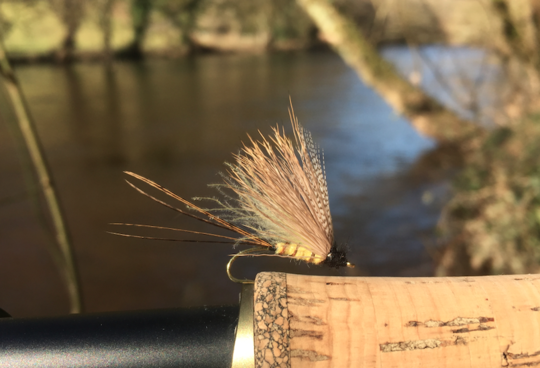
A blossoming not to be missed!
Fly fishing in May, when these insects are out in good numbers, is always memorable. It's a superb spectacle and often a highlight of a fly fisherman's season. Some even travel to another region specifically to experience these moments.
Trout love them, and gobbling is sometimes violent, other times discreet and promising. In any case, a good hatch often makes for great fishing, and sometimes the biggest trout of the season!
